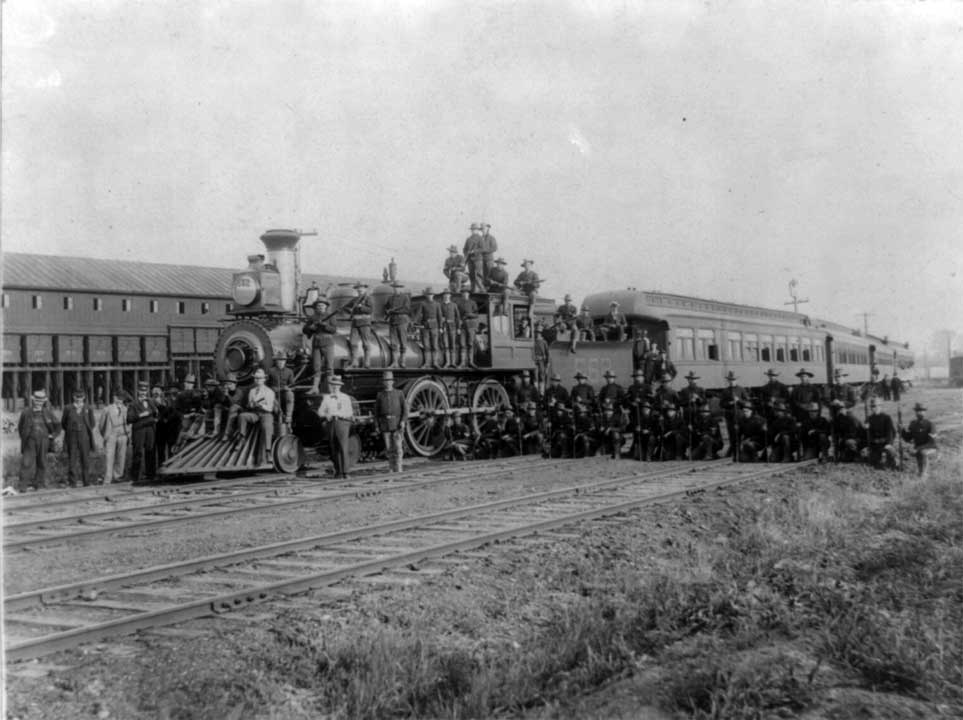Railroad Strikes

The first major strikes against railroads broke out in 1877, when many major railroads cut back wages by 10%. The strikes began on the B&O and spread to the Pennsylvania, where railroad property in Pittsburgh was severely damaged by the strikers. Federal troops were used to put down the strikes, because the local militias were sympathetic to the strikers. The federal troops opened fire a number of times on workers before all the strikes ended. In 1894 employees of the Pullman company demanded that their wages that had been unilaterally cut be restored. A strike was called, and before long railroad employees throughout the Chicago area lent their support to the strikers by refusing to work any train that had a Pullman car in it, this effectively stopped all passenger service in and out of Chicago. President Cleveland sent in federal troops to break the strike.
Street fighting broke out in Chicago and 23 were killed. The Attorney General issued an injunction against picketing, but the union led by Eugene Debs ignored it. Debs and other leaders were arrested and the strike was broken.
.
 >
>